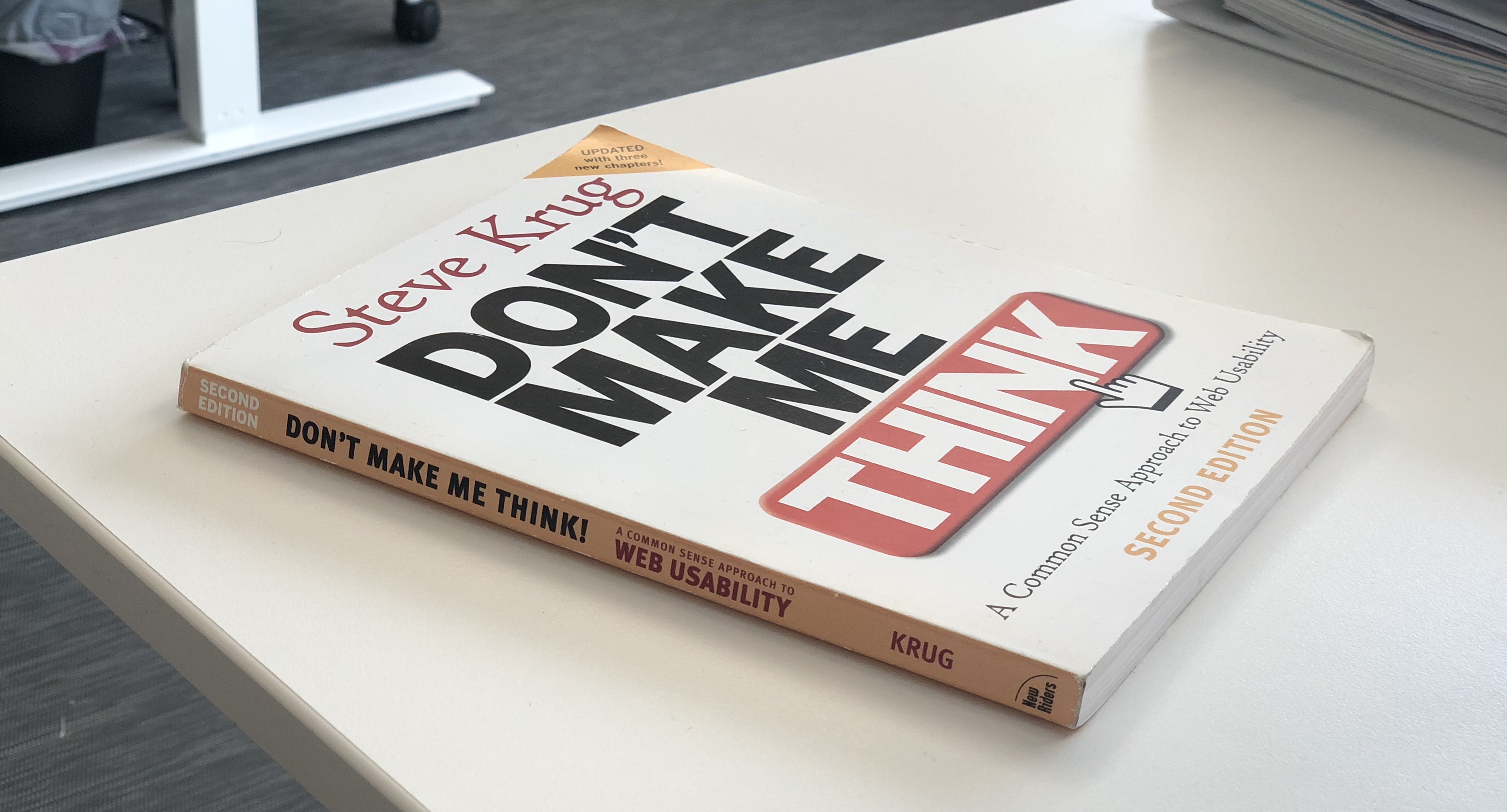Steve Krug’s ‘Don’t Make Me Think’ is still one of the most respected books about web usability, nearly 20 years(!) after its original publication. Some might even argue it’s more relevant today than ever, especially given the number of sites and apps there are in the world.

For both UX-newbies and UX experts (UX-perts?), there’s so much to be learned from Krug. If you haven’t already read Don’t Make Me Think, then: you should! But if you need convincing, here are four of the things I found most interesting when reading it for the first time…
There’s No Place Like Home(page)
Early in Don’t Make Me Think, Krug makes an interesting distinction between the homepage and the rest of a website. He states that “the Home page is not like the other pages – it has different burdens to bear, different promises to keep”. And he’s right; the homepage has a lot of work to do, such as tell your users what they can find on your site, how it might help them, and how they can reach these goals. On top of this, in a lot of cases, a company’s homepage will need to have regularly updated content to ensure visitors feel that it’s worth returning to… That’s a lot of responsibility for one page!
So, whilst consistency on websites (and apps) is very important, it often makes sense for the homepage to standalone in design and information architecture to accommodate all of this.
“But I Like It”
We all know what makes a “good” website, right? Well, sort of. Everyone knows what they think makes a good (or bad) website. Krug uses the following example: “Designers tend to think that most people like websites that are visually interesting because they like sites that are visually interesting… Developers, on the other hand, tend to think people like sites with lots of cool features because [that’s what they like].”
When working on a website or app, it can be very hard to remain objective and keep our own personal preferences at bay. This is why usability testing is so important.
Krug argues that any testing – even with a small, not-quite-representative sample – early enough in a development project can highlight issues that may not have otherwise been identified. But the most important point he makes is that testing shouldn’t be done to prove or disprove something; it should be done to better inform your strategy and the decisions you make.

The “Goodwill Reservoir”
Krug states that there are certain elements of usability that will diminish or increase a user’s “reservoir of goodwill” – no matter their personality or current psychological/physiological circumstances (although these will have an impact on the extent to which their goodwill is affected) – and these should be kept front-of-mind when working on a digital product or service:
[table id=12 /]
Accessibility: There’s Always Room For Improvement
Krug doesn’t shy away from the fact that there’s some scepticism and reluctance when it comes to ‘accessibility’. Unfortunately, this often stems from a lack of empathy; if you’re an able-bodied, 26-year-old whose social circle is made up of individuals similar to yourself, it’s hard to comprehend that a huge number of people need help doing things that you take for granted… like accessing the internet.
But for Krug, there’s only one argument that needs to be made:
“[Designing for accessibility] isn’t just the right thing; it’s profoundly the right thing to do, because the one argument that doesn’t get made nearly often enough is how extraordinarily better it makes some people’s lives. […] How many opportunities do we have to dramatically improve people’s lives just by doing our job a little better?”
It can be tricky to make a site or app accessible, and there’s still a lot of room for improvement. But for now, let’s take a leaf out of Pinterest’s book and stop worrying about increased workloads or ‘compromised’ designs and start focusing on how we can improve things – for everyone.
At Bunnyfoot, we agree with Steve Krug’s common-sense approach to usability – that’s one of the reasons why we’re leaders in creating positive and superior customer experiences. Get in touch for more information!
If you’d like to learn more:
- Blog: Usability: It’s About Humanity, Not Technology
- Blog: How To Optimise Your Online Registration Process
- Training Course: Certified Practitioner in UX




